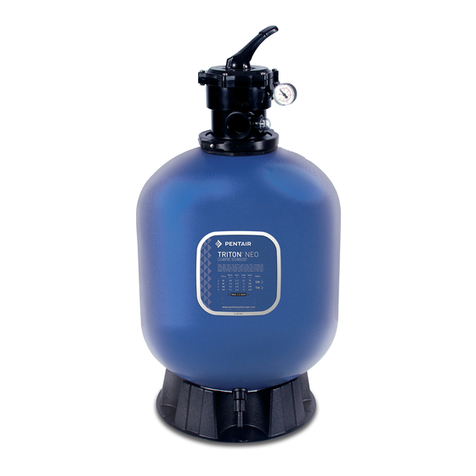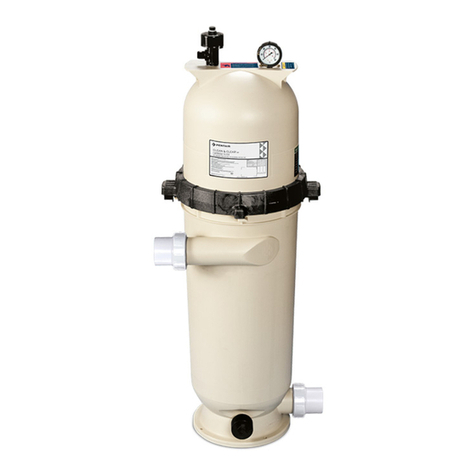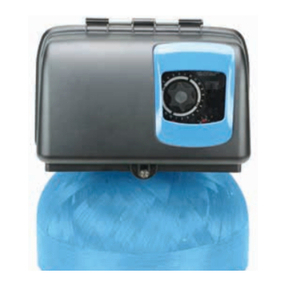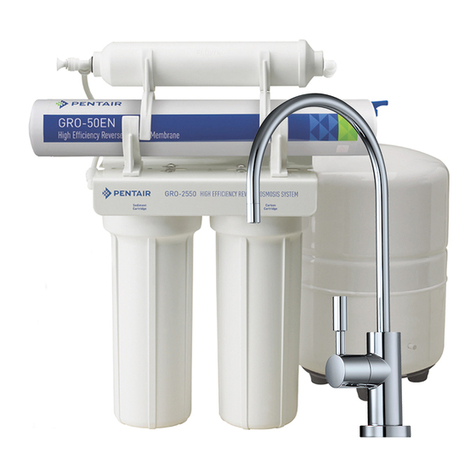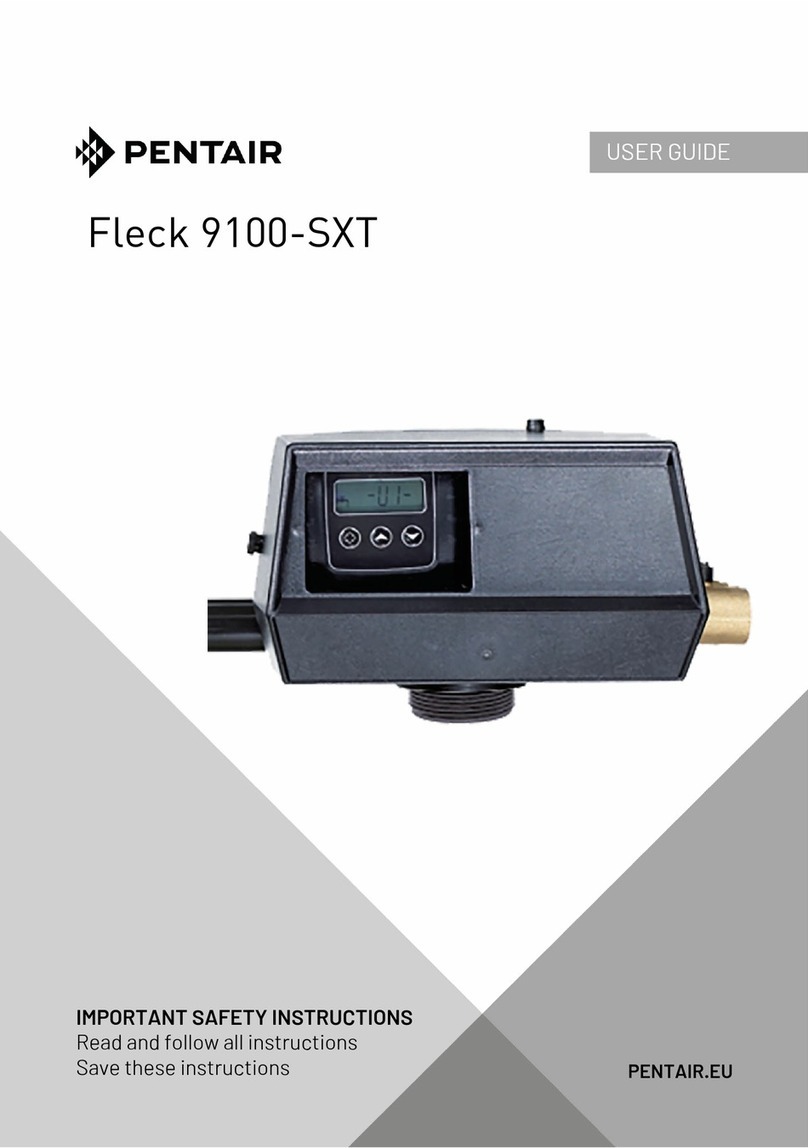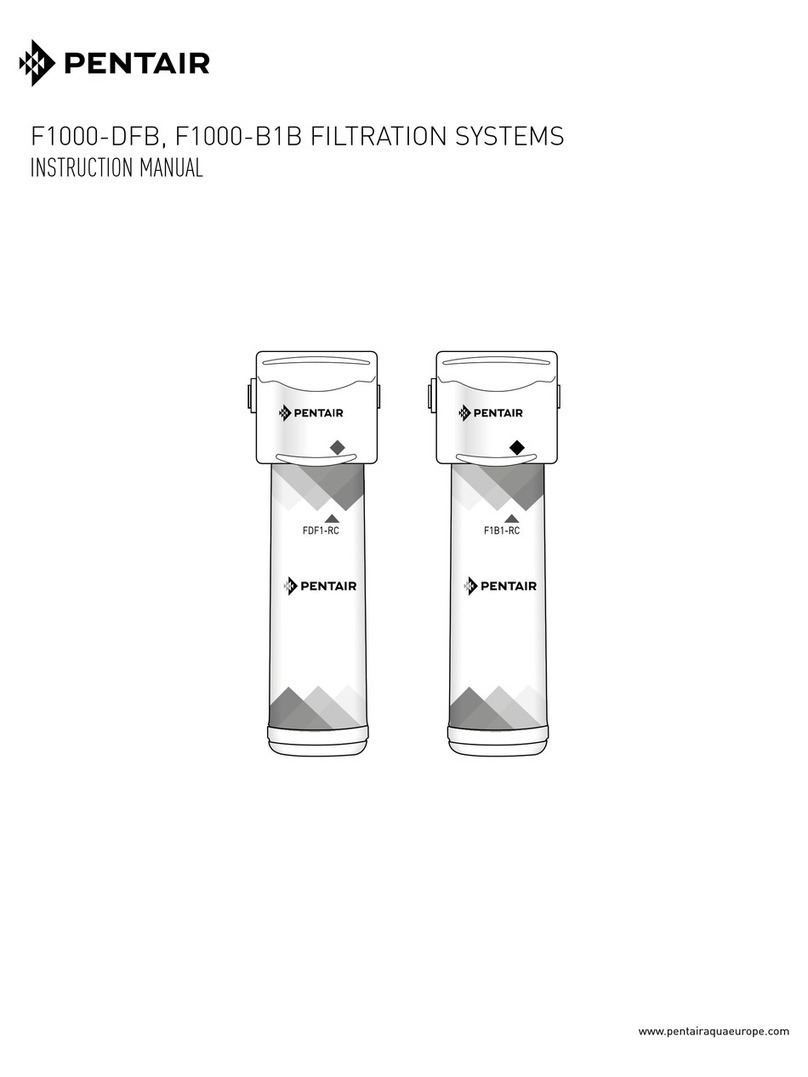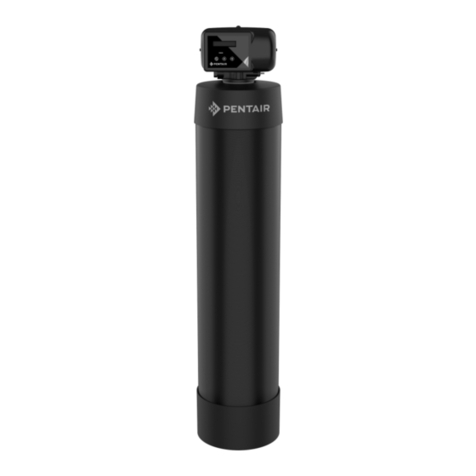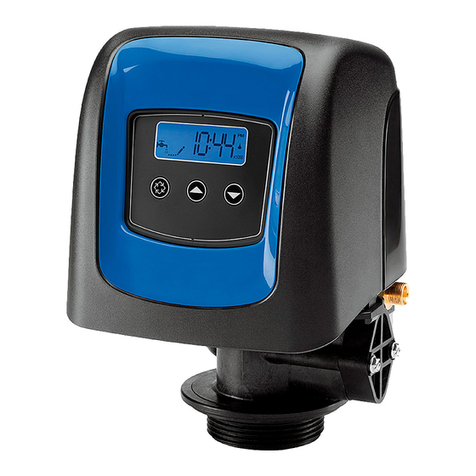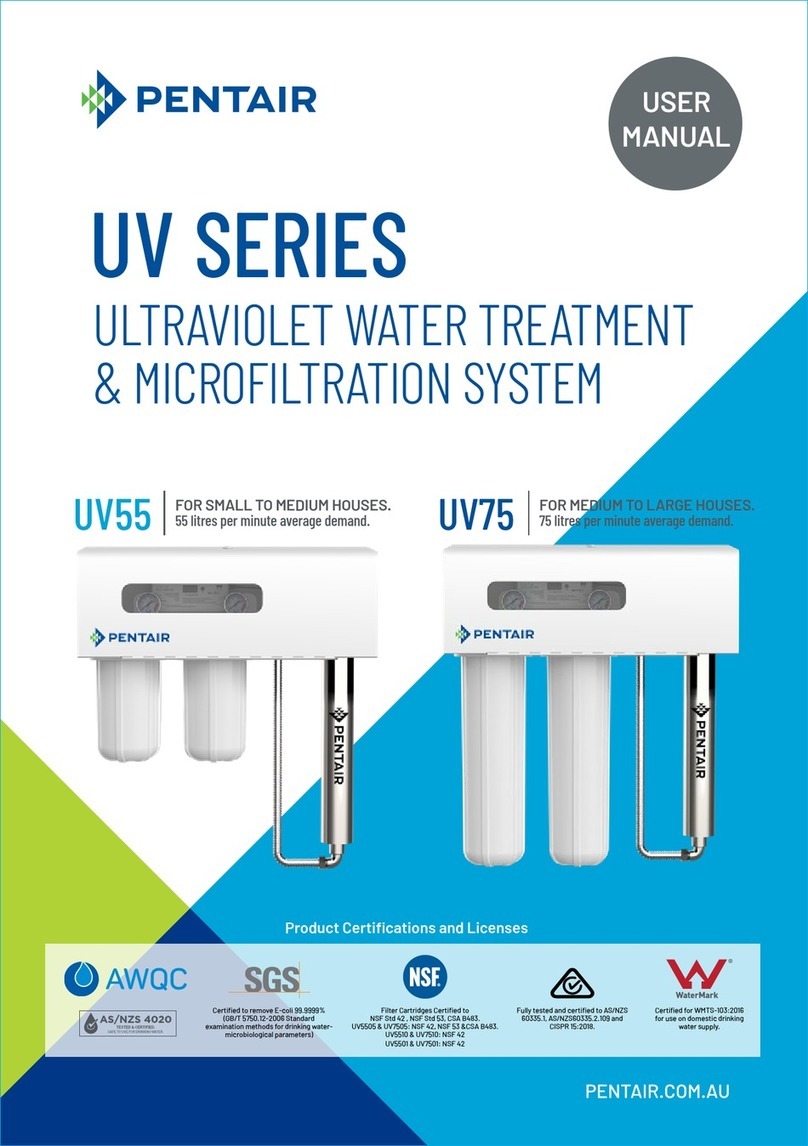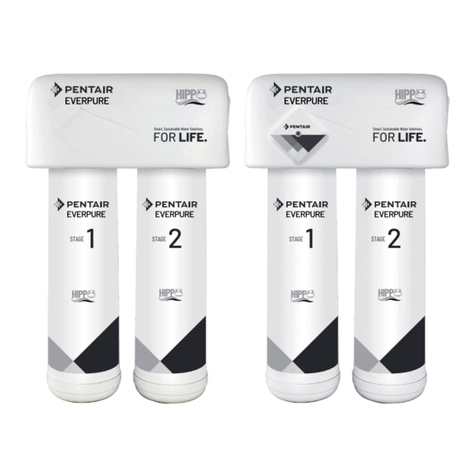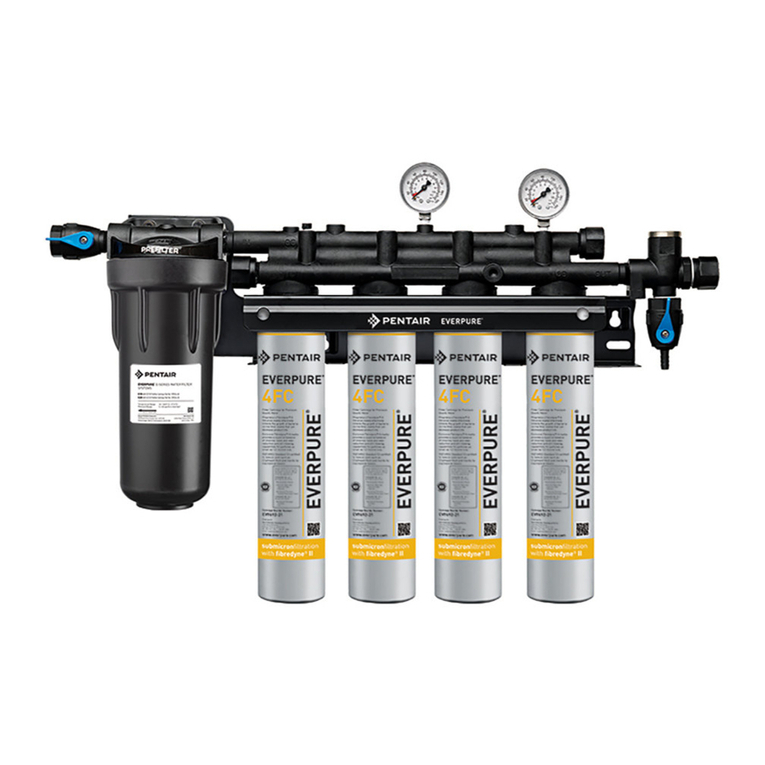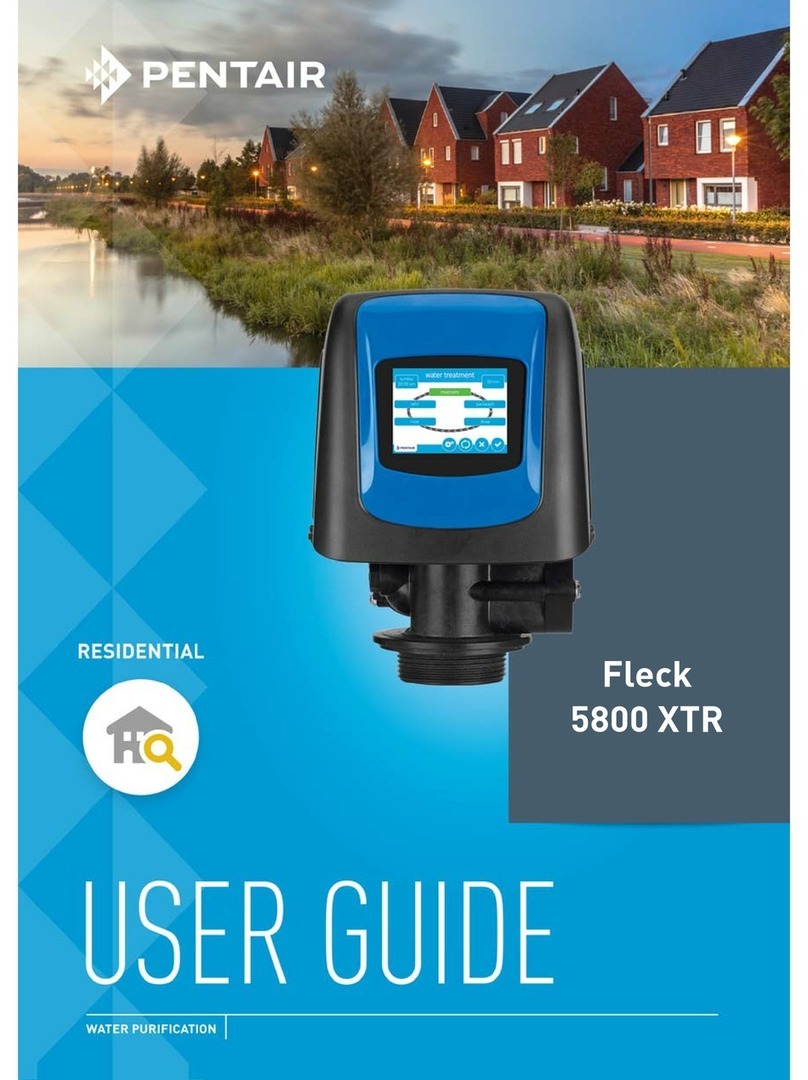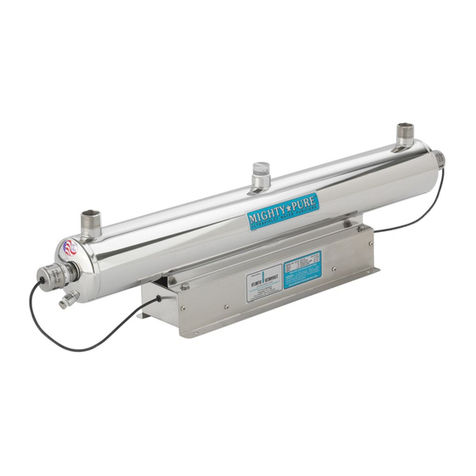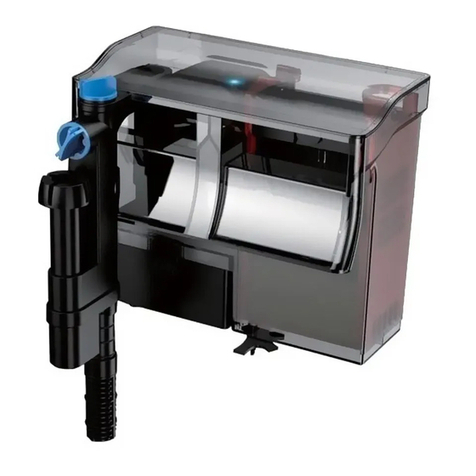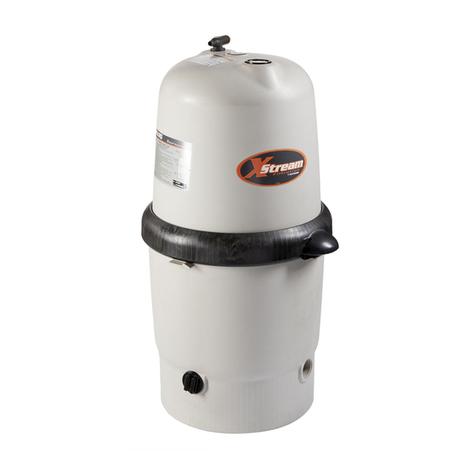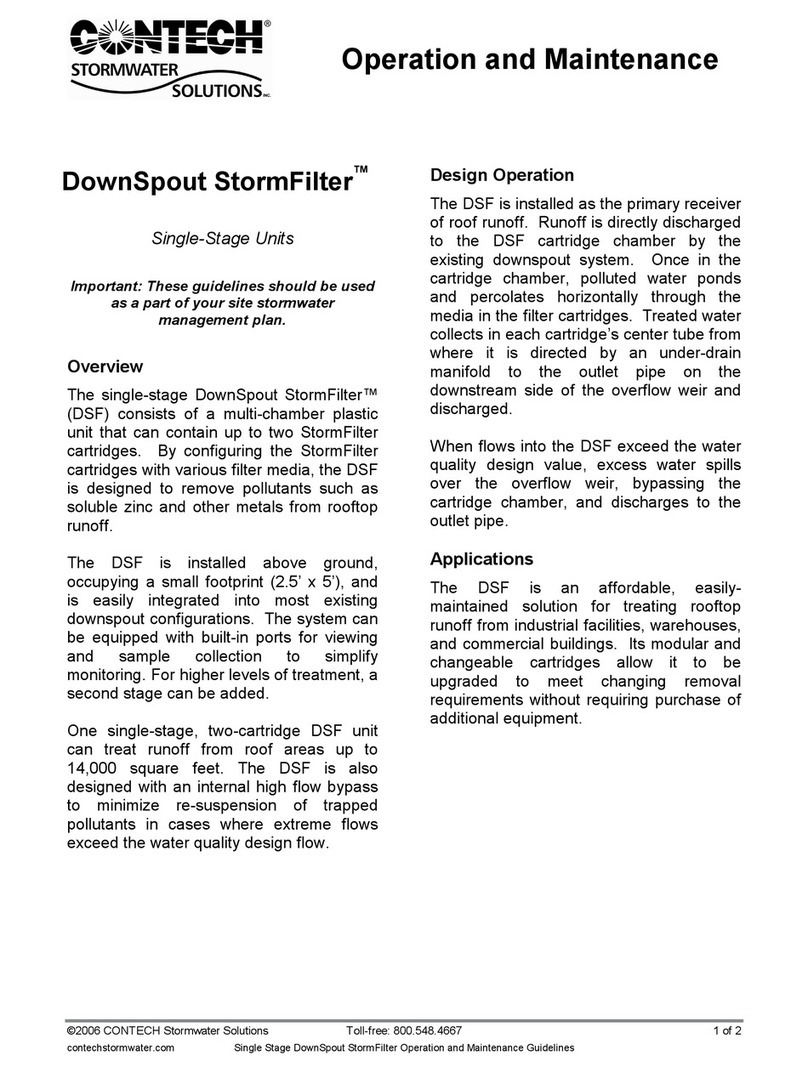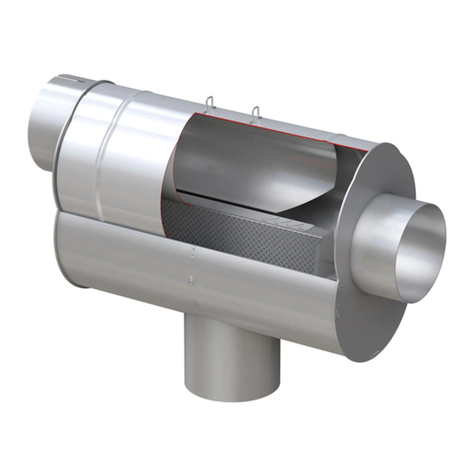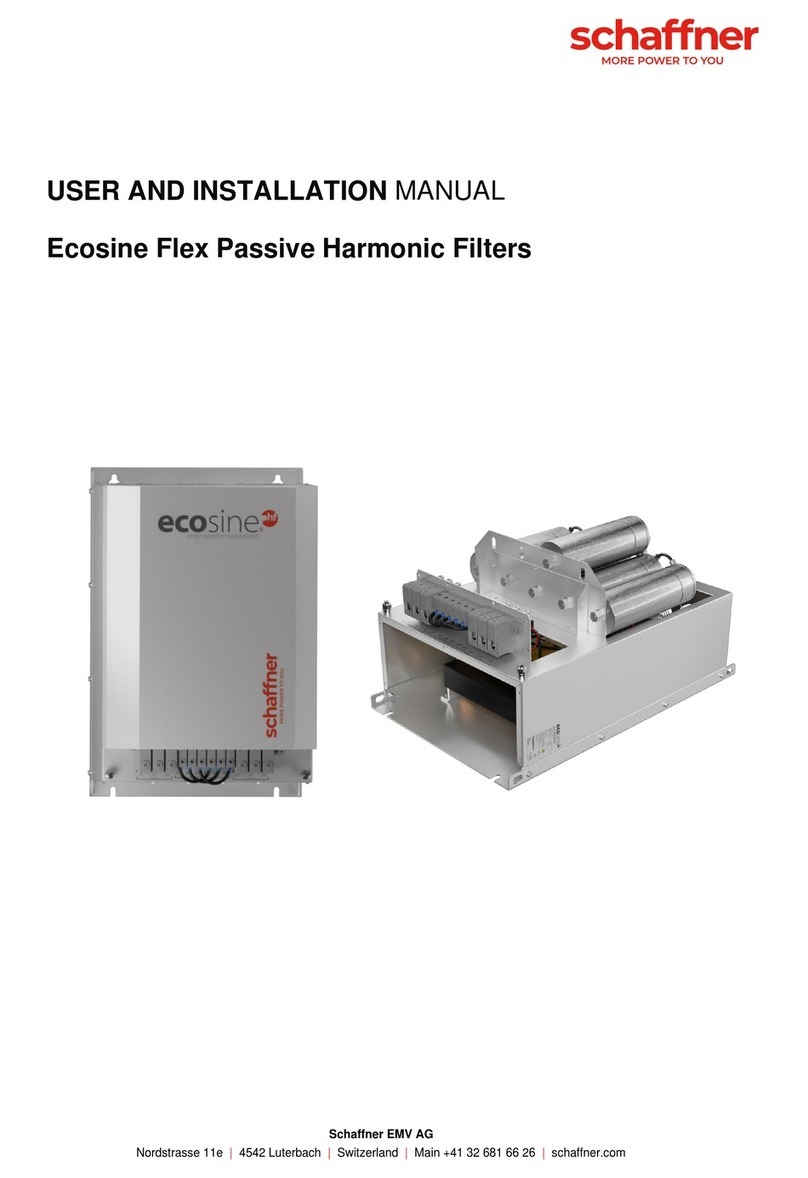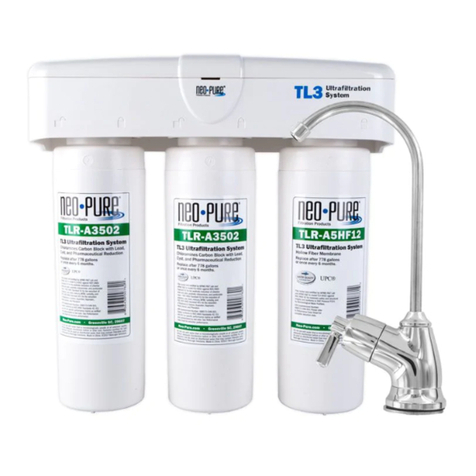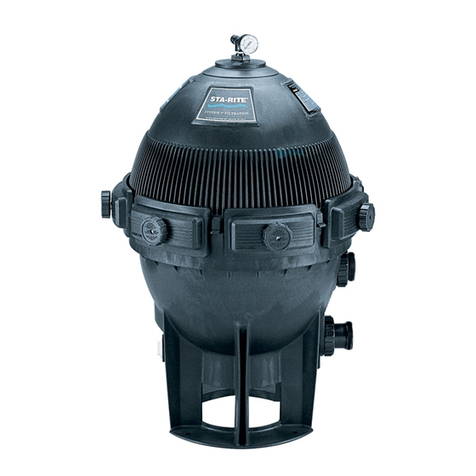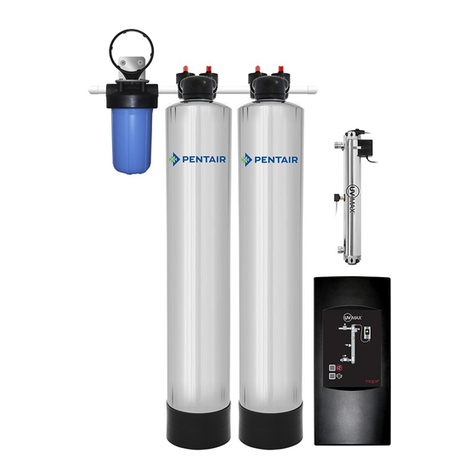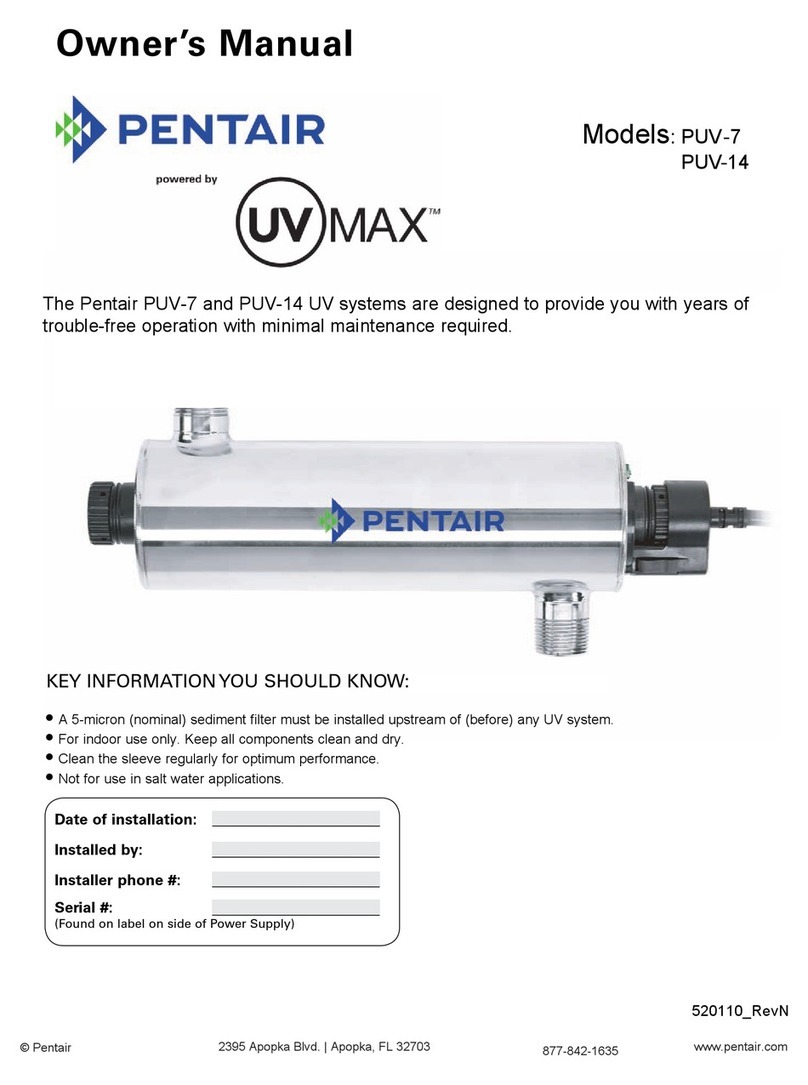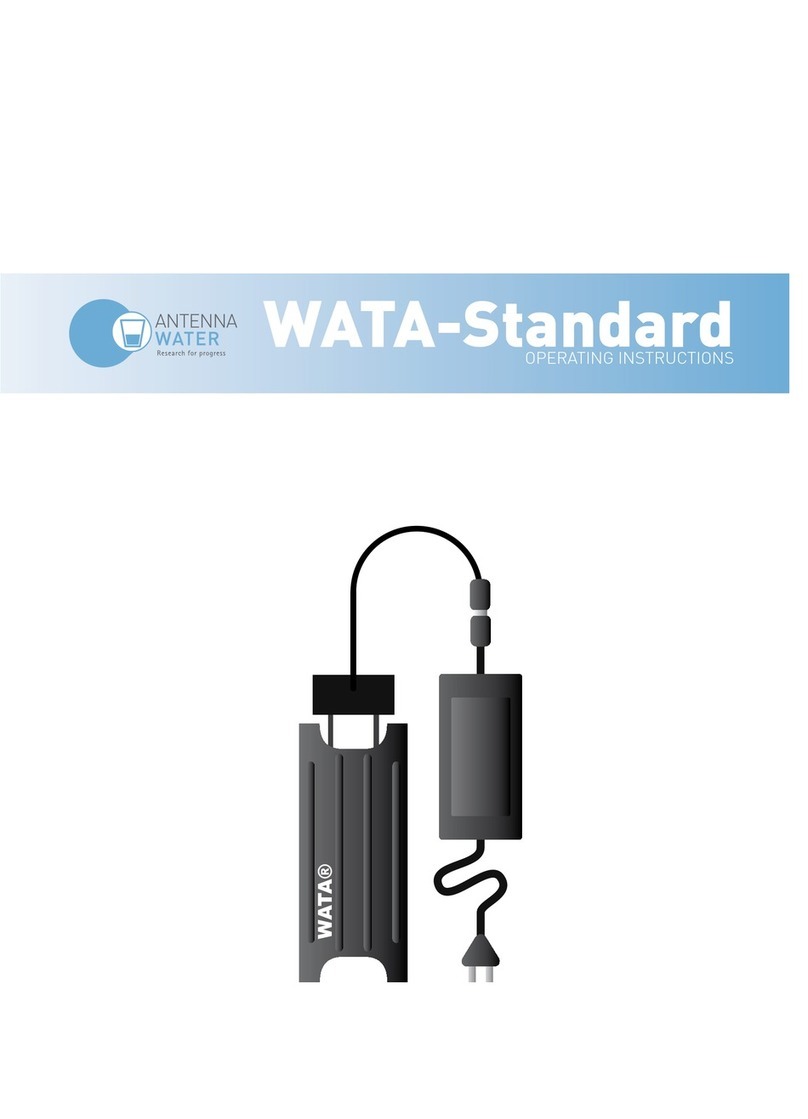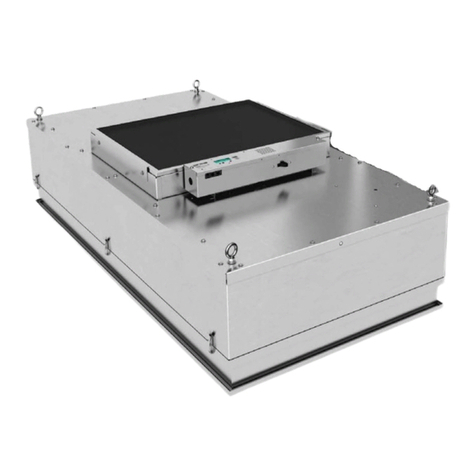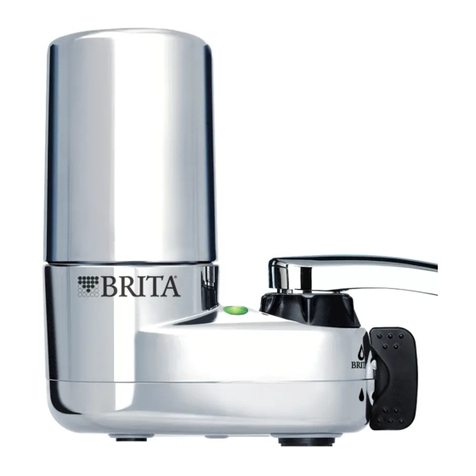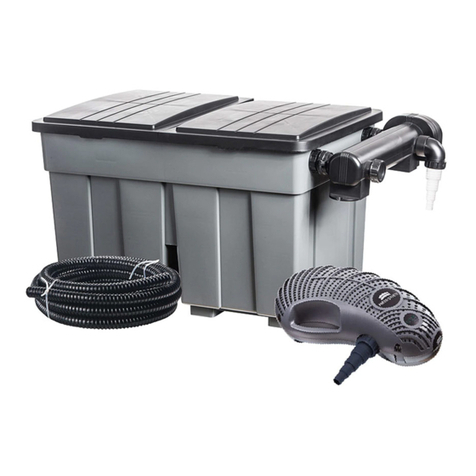
PENTAIR® EVERPURE® ENDURANCE HIGH-FLOW WATER FILTRATION SYSTEMS INSTALLATION, OPERATION & MAINTENANCE GUIDE • 3
5. Secure the pretreatment bracket with the head to the desired
location. Use the screw holes from the previous step for mounting.
6. Use a section of 3/4" I.D. tubing to reconnect the pretreatment
outlet to the inlet of the manifold. The pretreatment outlet cannot
be more than 25 feet from the manifold. The tubing should have
clamps at each end with no sharp bends or kinks.
NOTE:Use tubing that is opaque and suitable for use with
beverages.
7. Mount the manifold using four (4) screws in the bracket mounting
holes.
8. Connect the treated water outlet port to the equipment being
served (Figure 2).
Figure 2
Flush Valve
3/8" Barb
Treated Water Outlet
3/4" NPT
Scale Inhibitor Outlet 1/2" Barb
Untreated Water Inlet
3/4" NPT
9. Connect the untreated water to the inlet tting on the
pretreatment head (Figure 2).
10. Attach 3/8" I.D. tubing to the ush valve tting (Figure 2). Run the
other end of the tubing to a drain.
NOTE: Some plumbing codes require an air gap at the drain
termination.
11. The 2SR-BW does not have a shut off valve. Attach 1/2" I.D.
tubing to the outlet barb of the 2SR-BW head. Route the other
end of the tubing to the equipment being served. Both ends of
the tubing should be clamped to the hose barb.
12. Turn off the ow valves for the inlet, ush and scale inhibitor
cartridge (2SR-BW) (Figure 2).
13. Check to be sure the O-ring on the pretreatment housing is
suciently lubricated. Use a good grade of silicone lubricant,
if needed. Unwrap the pretreatment cartridge. Position the
pretreatment cartridge on guide seat in the bottom of the bowl.
Then thread the bowl into the head by hand. Use a sump wrench
to lightly tighten the bowl onto the head. This bowl can be
tightened further if leaks occur later. The two O-rings at the top
of the cartridge will t snuggly into the head.
NOTE:To install the carbon lter and scale inhibitor cartridges,
align the cartridge lug with the label, push upward and
rotate to the right (cw) until rotation stops.
14. Install only genuine Pentair Everpure carbon lter cartridge(s)
into the lter head(s) following directions on the SEN
cartridge label or as shown in the Cartridge Change Procedure
illustrations. Install the scale inhibitor cartridge (2SR-BW).
CAUTION: Unused manifold ports must be plugged. Any ports
that are not plugged will leak.
15. Open the ush valve then turn on the inlet water. Open the valve
on the pretreatment head. Water will ush to the drain at full
force. Allow the system to ush for ve (5) minutes. This will set
the ltering media and purge any air.
16. After ushing, close the ushing valve. The pressure gauge will
show the system pressure when the cartridges are new.
17. Open the valve for the scale inhibitor cartridge. The Endurance
High Flow system is now ready for use.
FLUSHING
For maximum life, all carbon lter cartridges must be ushed for
ve minutes at full ow before use. FLUSH ALL CARTRIDGES AFTER
EACH CARTRIDGE CHANGE.
If the new cartridges have been adequately ushed and the
pressure gauge needle registers inadequate pressure; you may be
experiencing insucient water pressure or some restriction may
exist in the inlet water line. In either case, the water pressure needs
to be improved to achieve optimum lter life.
If the system is switched off for more than 48 hours, ush for at
least two (2) minutes.
CARTRIDGE CHANGE DETERMINATION
Replace all lter cartridges annually, when capacity is reached or
when water pressure or ow to equipment becomes inadequate. All
cartridges on multiple cartridge systems should be changed at the
same time.
The system pressure gauge provides a quick, simple means of
determining when the lter cartridge(s) should be checked. It is
installed on the system outlet manifold. The gauge can be used
to monitor both dynamic (owing) and static (line) pressure. The
cartridge(s) should be changed when the pressure gauge is in the
red area while the equipment is in operation, and the needle shows
adequate line pressure between cycles. Observe the needle during
the next equipment on cycle. If the needle registers adequate
pressure, it can be assumed that the temporary low-pressure
condition was caused by a brief power failure or other incoming
pressure disruption. If the low pressure condition is not due to an
external condition, check/change the pretreatment lter rst. If the
low pressure condition is still not corrected, change the SEN carbon
lter cartridges.
